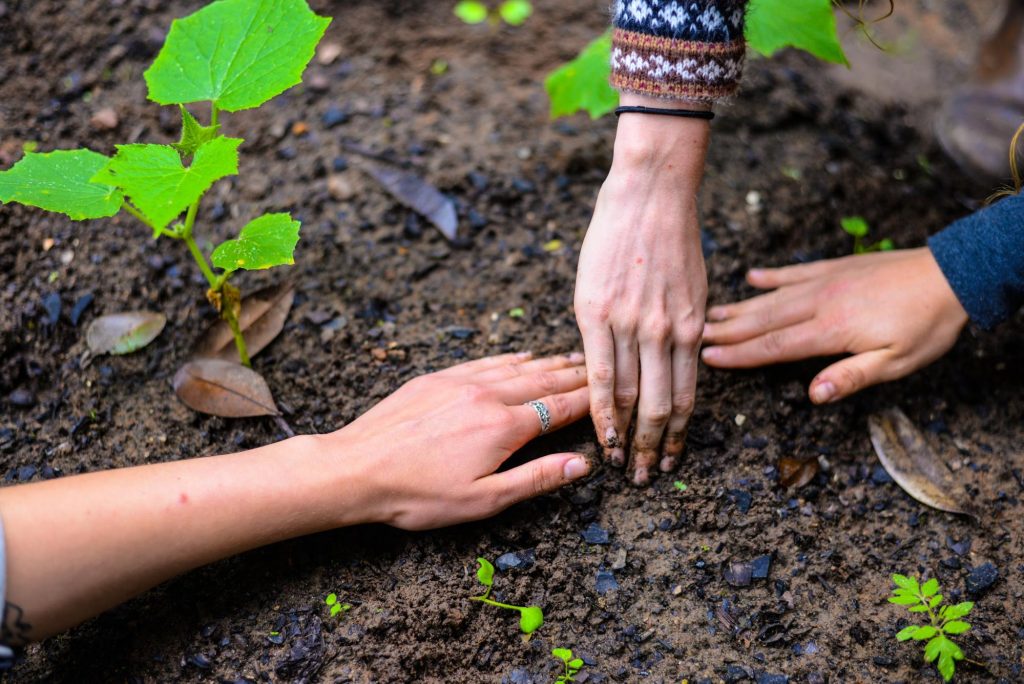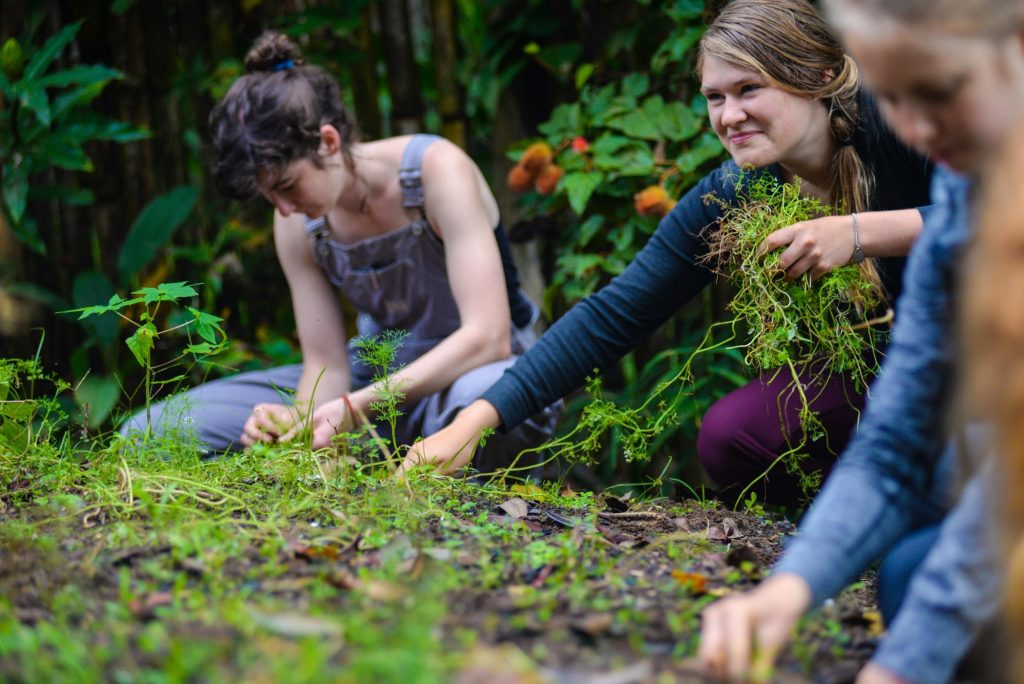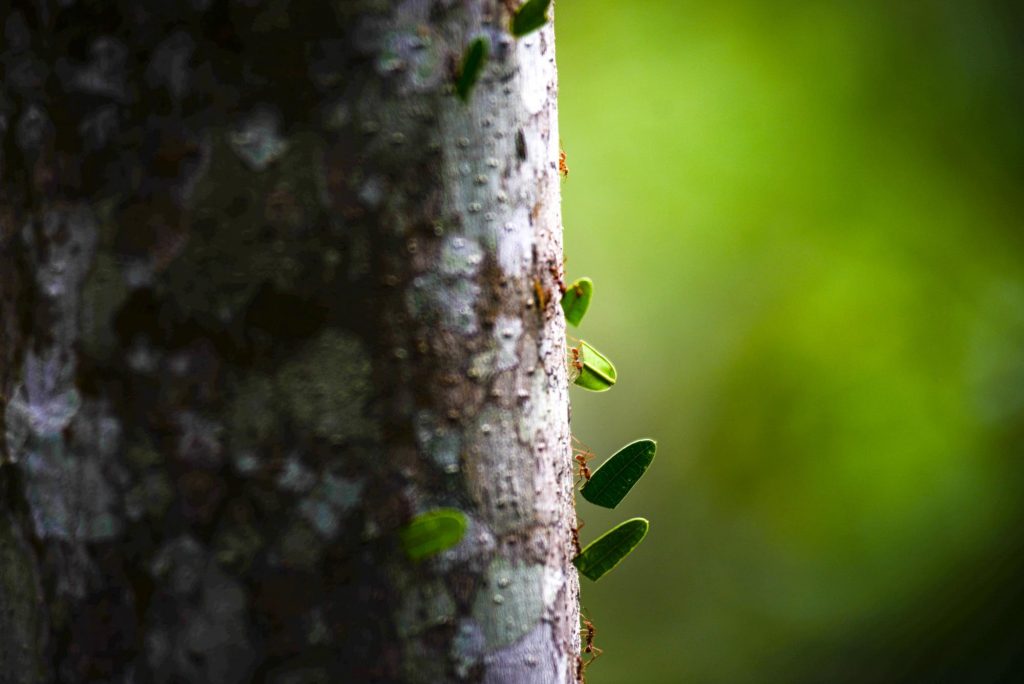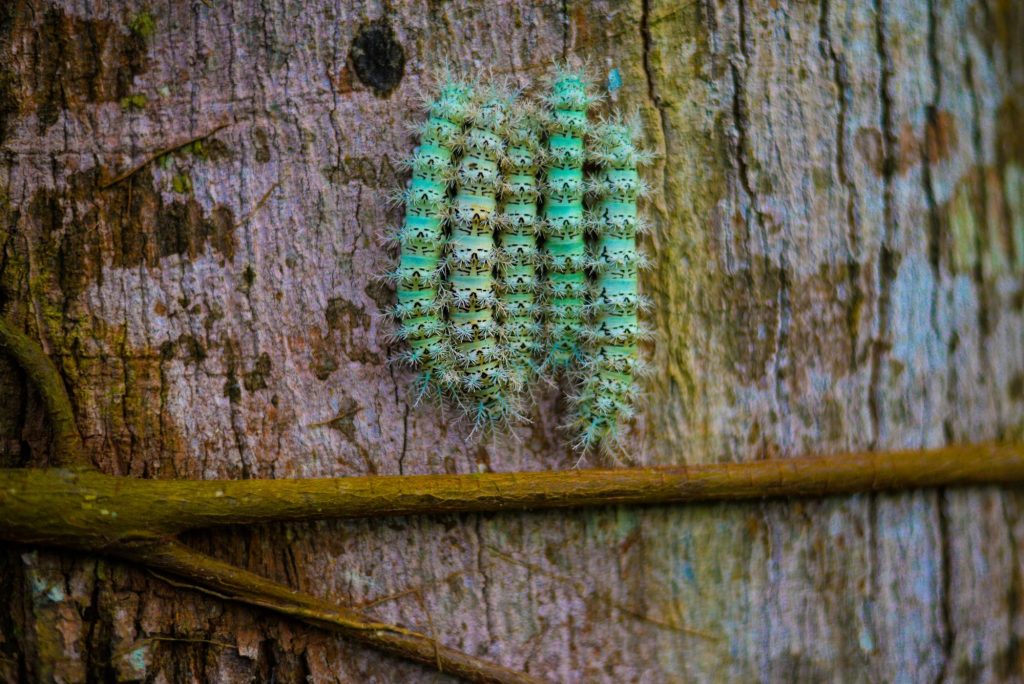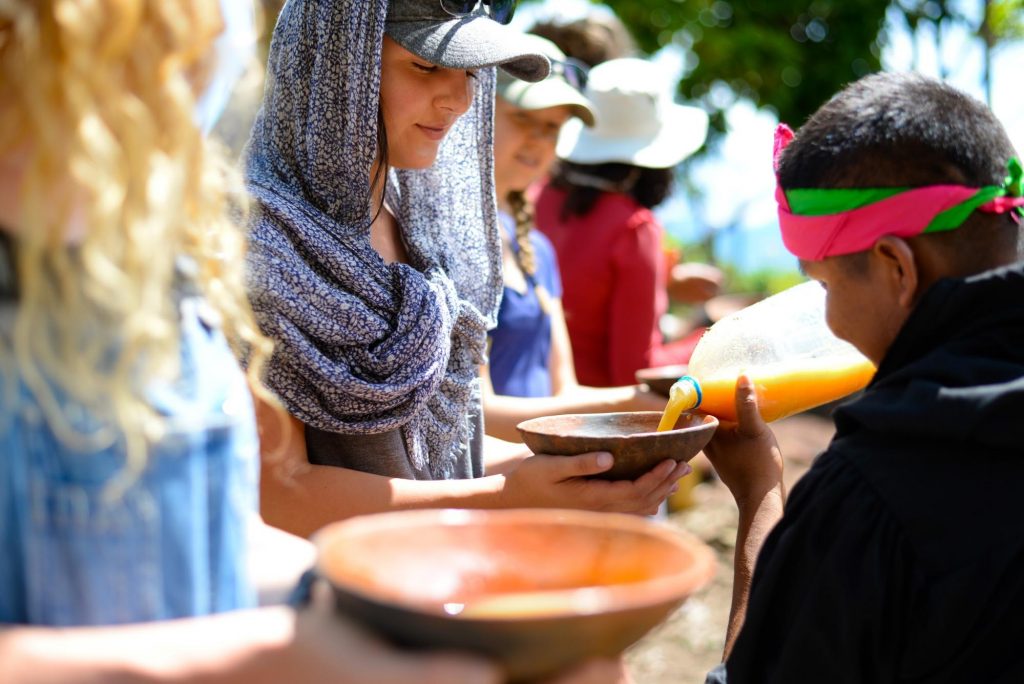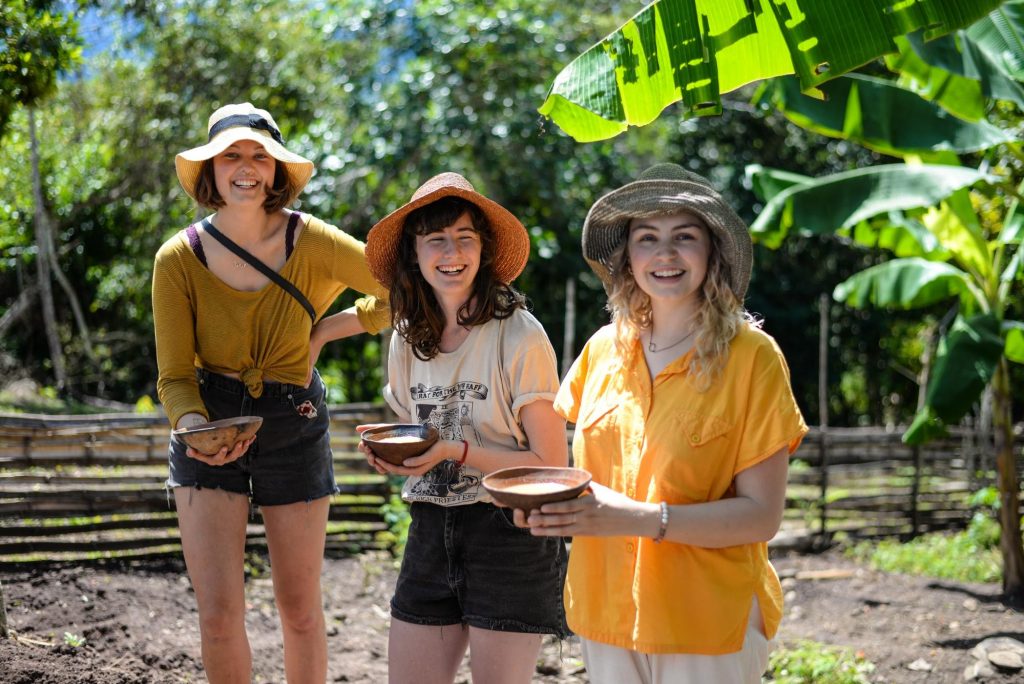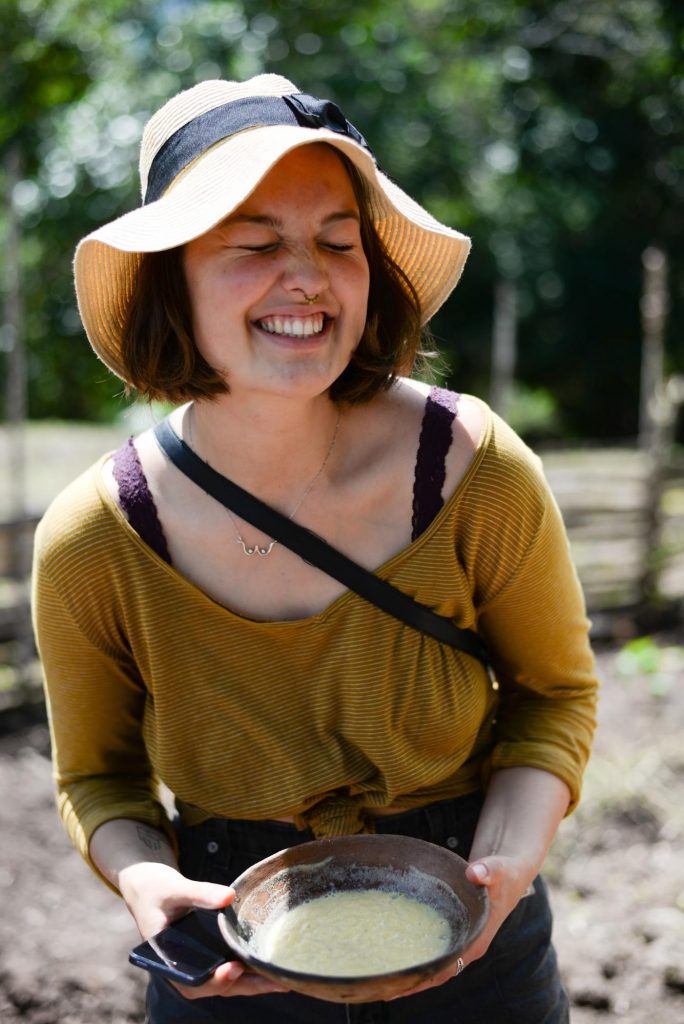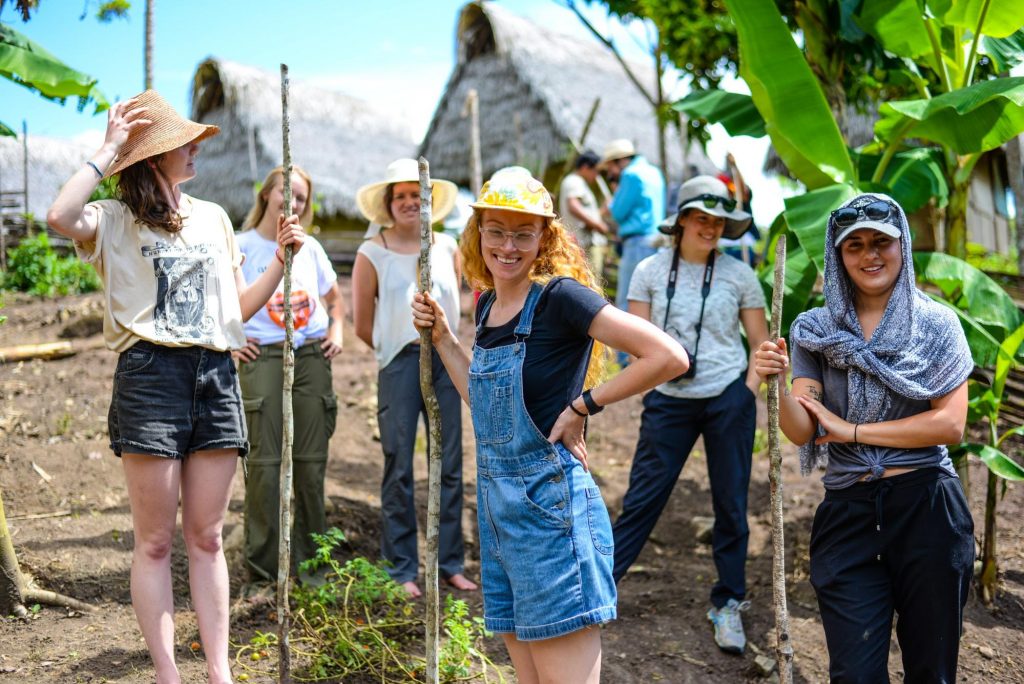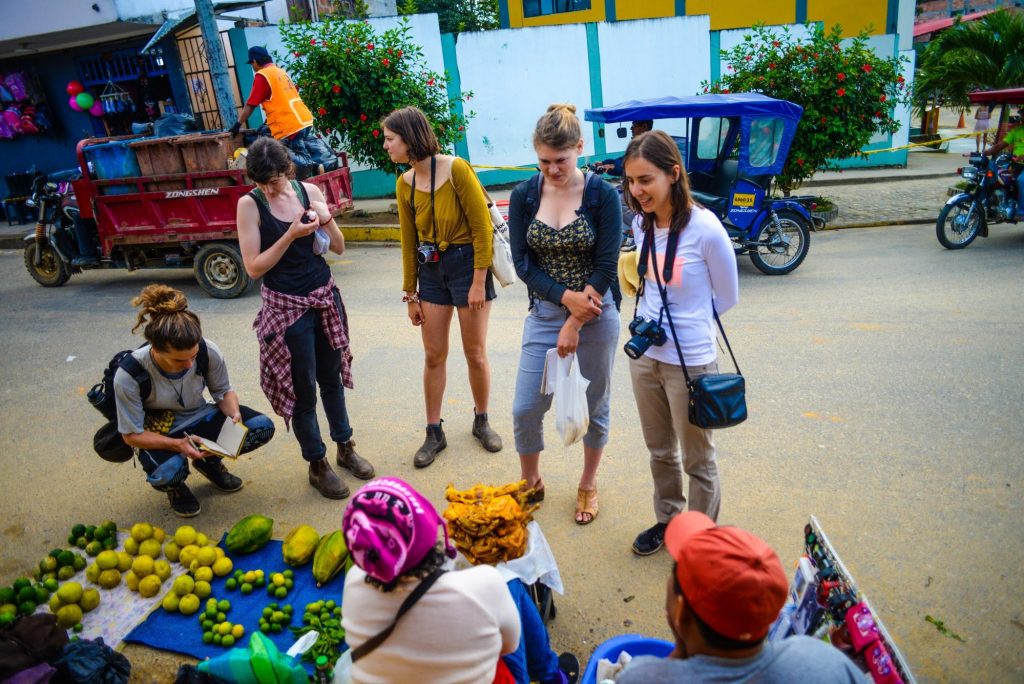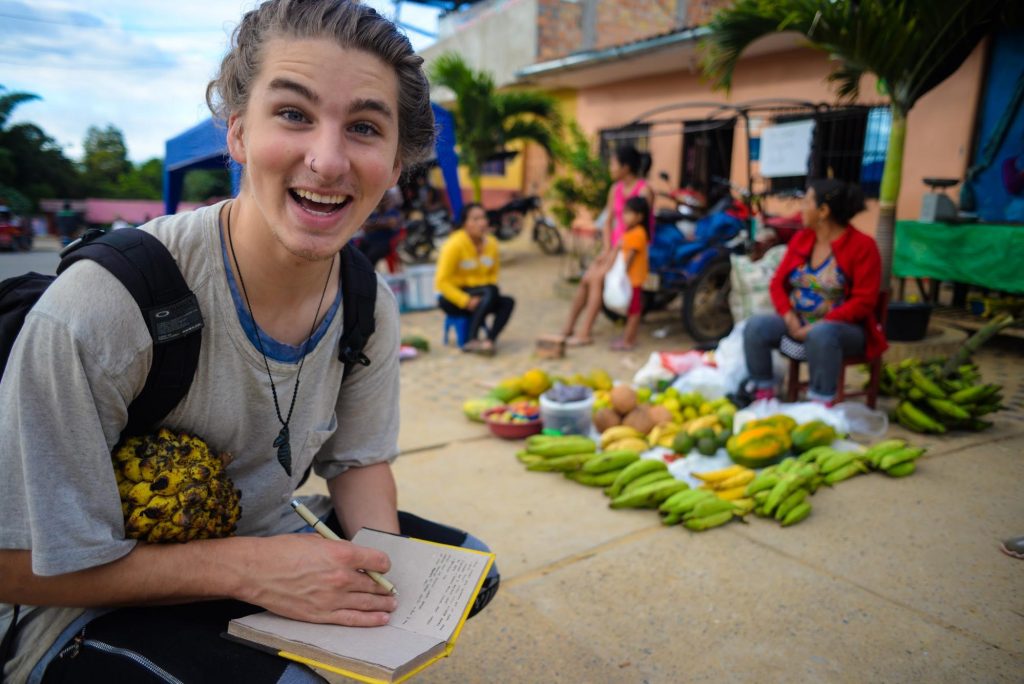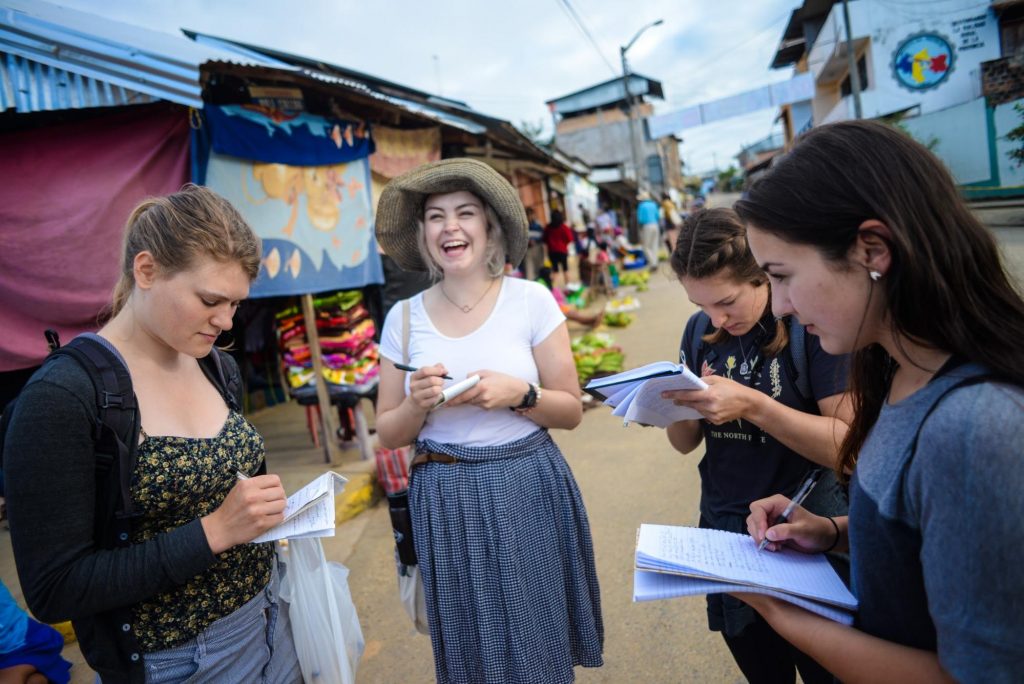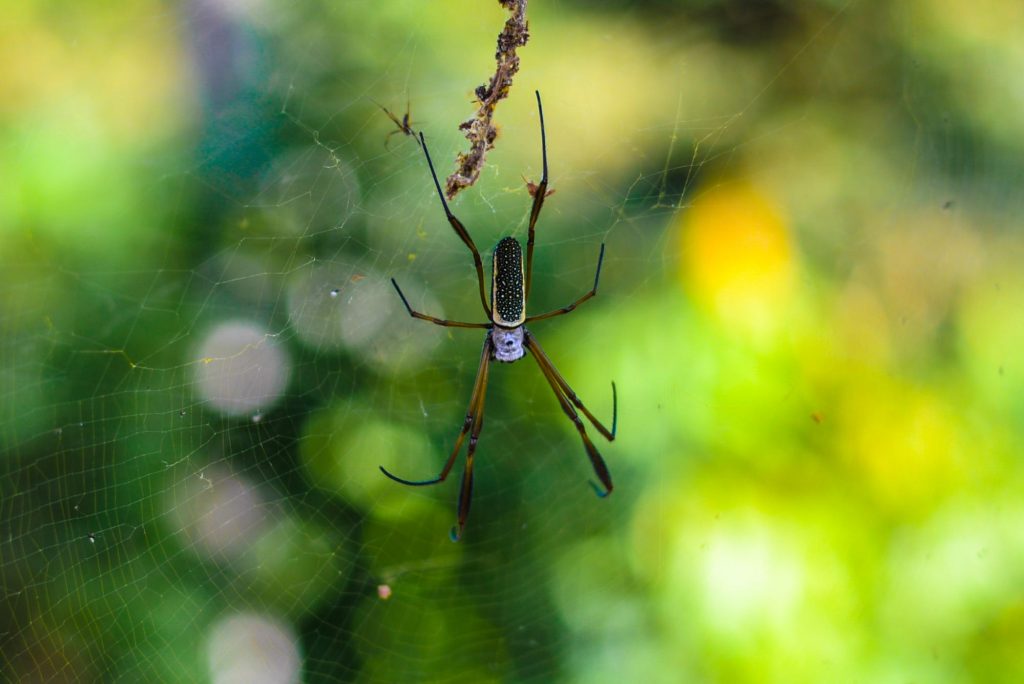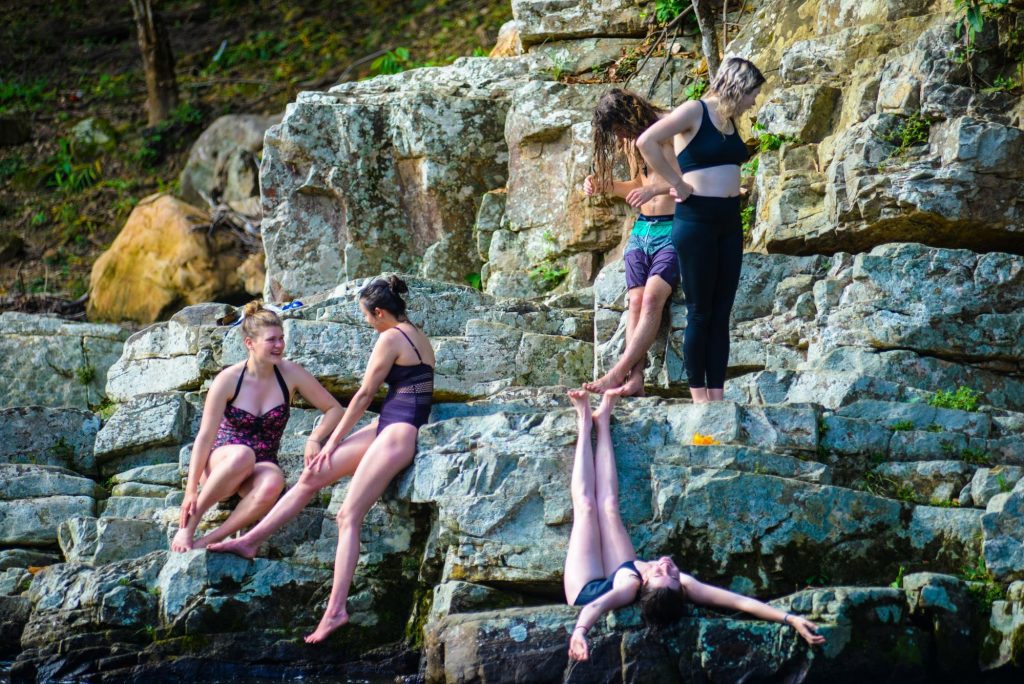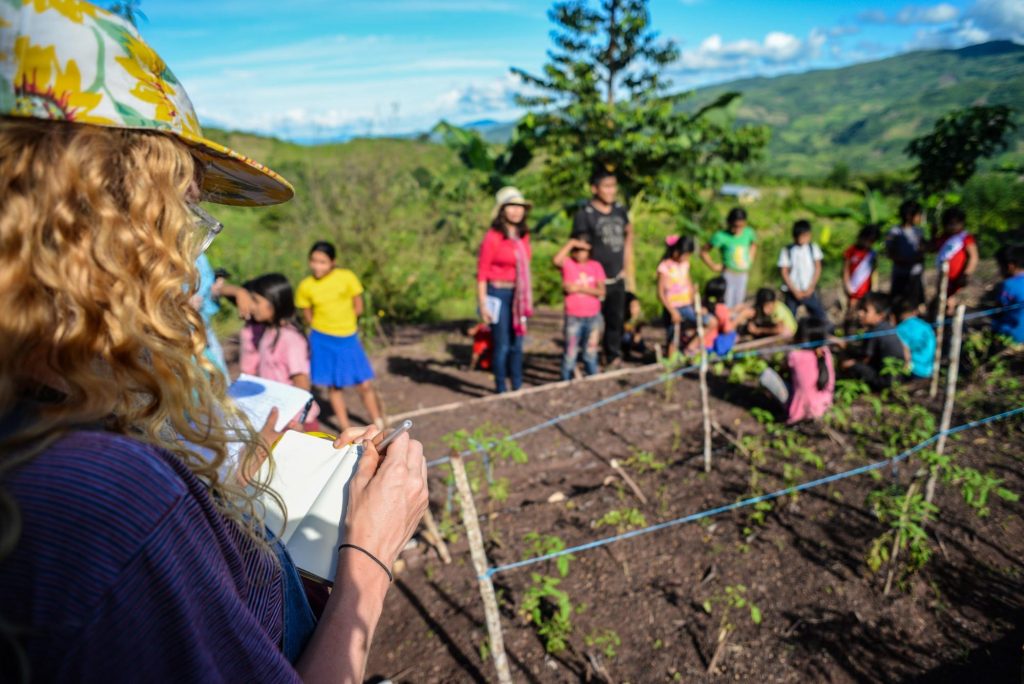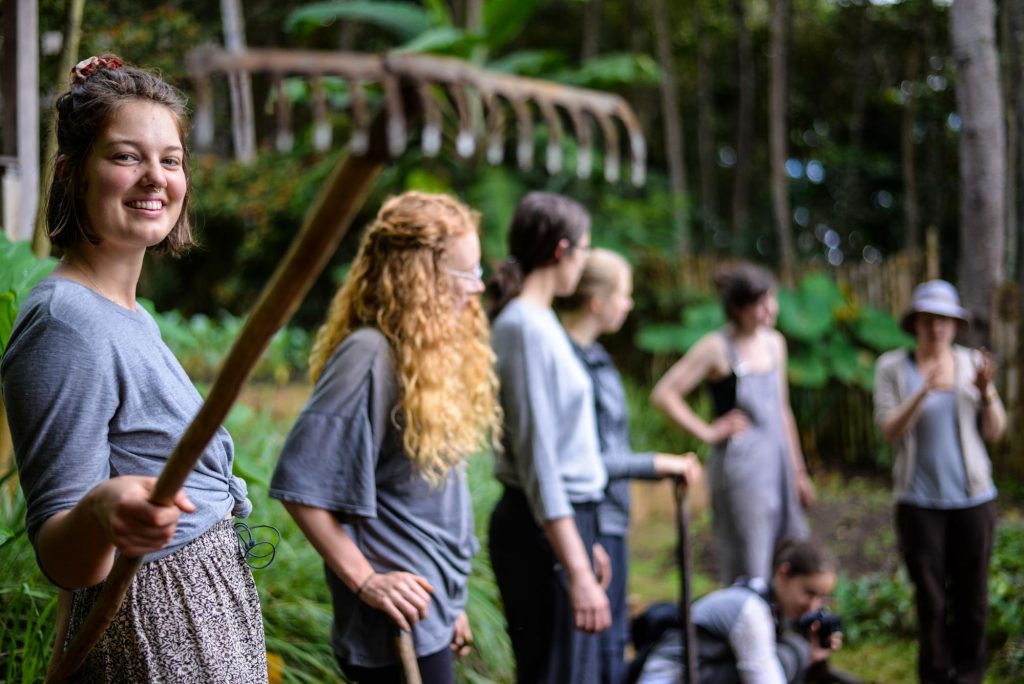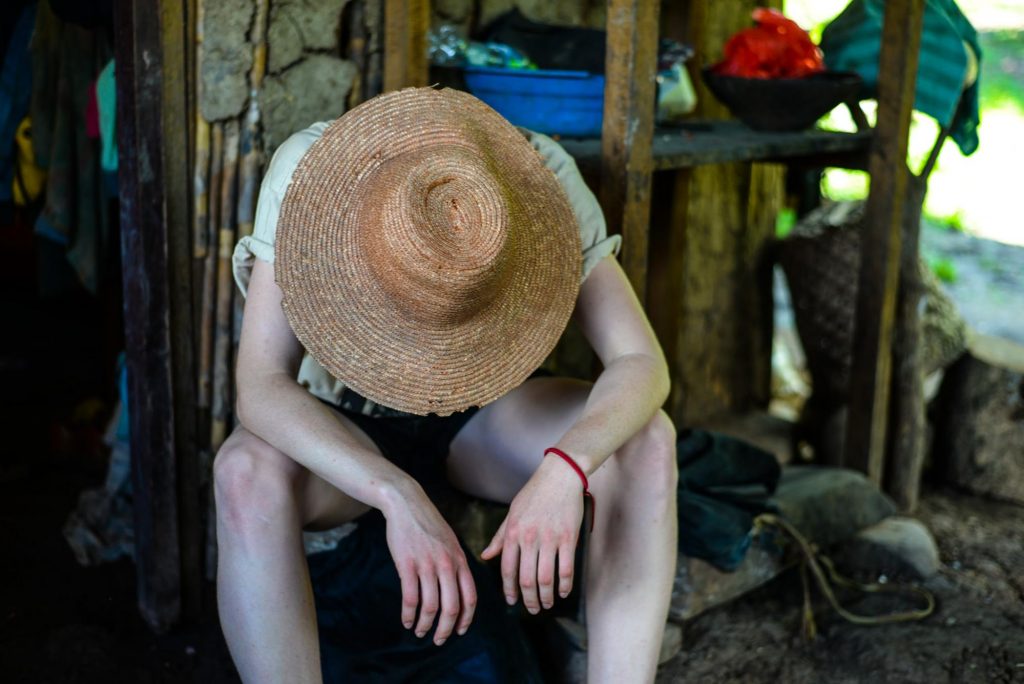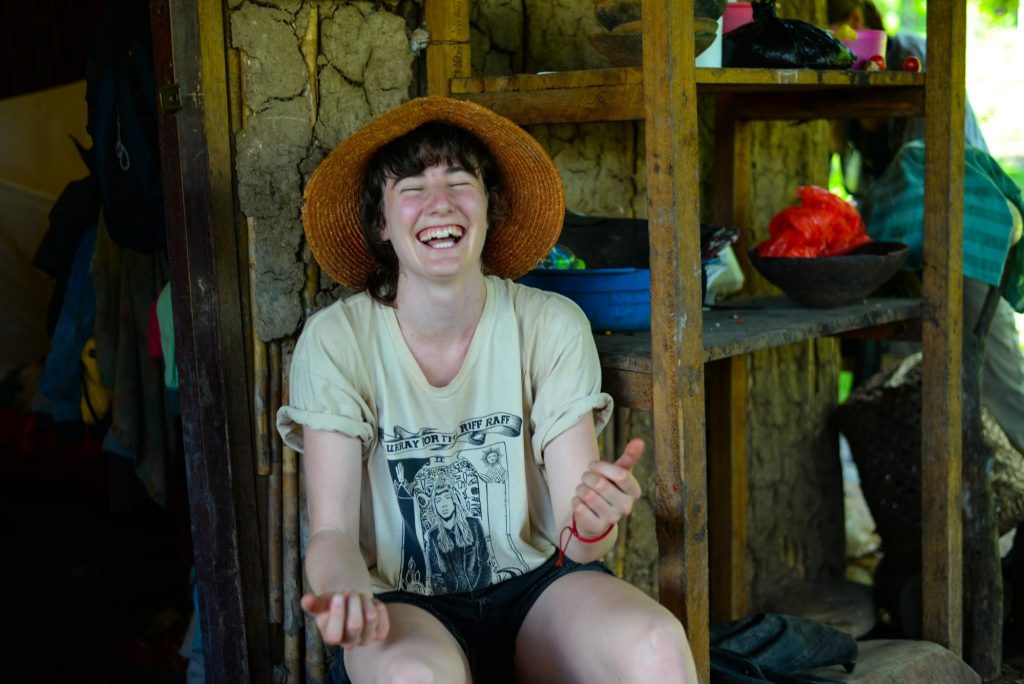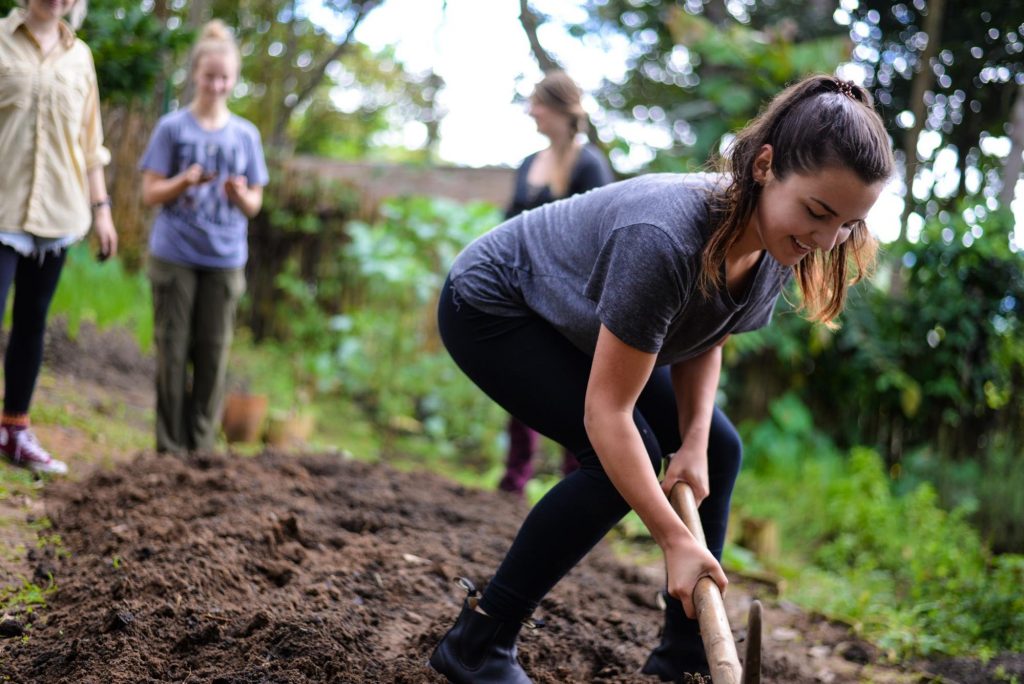Peru Field School: Sacred Soil
Guest post by Mike Graeme
Leading up to the field school, our professors asked us to ruminate on economy, ecology, and spirituality. The three seemed like fairly separate entities to me.
I have grown up steeped in Western worldview where the economy is guided by market forces, where ecology is something “out there” to be conserved through so-called “objective” scientific research, and where the sacred in our lives is segmented, taking place for example once a week within the walls of Sunday church.
This perspective crumbles after only a few days of arriving at the Sachamama Centre for Biocultural Regeneration.
We learn that in the Indigenous Kichwa-Lamista worldview, the economy goes beyond humans to include spirits. The ecology is sacred. The soil, plants, rain, moon, sun, trees, river are living beings. The soil is named Mama Allpa and in the Indigenous Kichwa-Lamista worldview, it is necessary to respect her in order to receive from her the gift of food.
“Mama Allpa is part of our body, not something outside of us,” says Señor Royner, who works and teaches at the Sachamama Centre, “We always say ‘thank you’ to Mother Moon, Father Sun, Mother Forest and Water. And when we sow a seed we sing so they will grow with energy.”
In one of our readings from Religion and Sustainable Agriculture, founder of the Sachamama Center Frédérique Apffel-Marglin writes that these offerings “emphatically enact a conscious and intentional bond of respect between humans and the soil which simultaneously recognizes the agency of the earth.”[1]
The notion of the earth having agency differs sharply with Western notions that the natural world lacks sentience and consciousness. The Western view that successful agriculture comes merely from adequate nutrients, sun, and water—all considered inert physical necessities—contrasts with speaking directly to Mama Allpa, the spirit of the earth and soil, and asking her for permission to plant and be granted a productive harvest.
Conversely, the Western method seeks to control the universe, chemically squeezing out productivity from the land, a worldview that has permitted industrial agriculture, which has brought with it a suite of seen and yet-to-be-seen ecological costs.
On one of the most special days of the field school we attend a ceremony at Urkumaman Wasi, where Señor Royner and his uncle Señor Gregorio lead us in an offering to Mama Allpa. As we hold our bowls of chicha (a fermented corn drink), Royner asks us to “find our hearts and souls in order to offer this chicha, this love to the land, because we live from her,” he says, “and so we must share something with her.”
“We share chicha like a ‘cheers’ to the soil,” Royner continues. “We delight with the earth. We treat it like our own child. We give her our heart. If we treat Mama Allpa with care, then she will treat us with care.”
After speaking to Mama Allpa, we smash our bowls of chicha, leaving the ceramic shards for the soil, completing the gift.
Ceramic shards are found in the soil throughout the region. It is an ancient practice that rational science would explain in utilitarian reason: pottery shards have an opposing ionic charge and thus facilitate plant nutrient absorption, but that’s as far as the science takes us. The notion of reciprocity takes us farther. Mama Allpa is a being with agency and without making offerings to her she won’t reciprocate. This constitutes a holistic way of being, where reality is infused with the sacred and where economic relations include spirits.
I wonder if this practice of offering to Mama Allpa is as widespread as it used to be. A great thing about field schools: when you have a question you can go out and experience the answers. Our class makes a field trip to the local market, where I talk to some of the merchants.
The first man I talk to is bringing honey from his bee farm to sell at the market. He also has a chacra, a subsistence food garden, where he grows various vegetables.
“Do you make offerings to your chacras before planting?” I ask. He points up at the sky, and says “Yes, to God.”
The second person I ask has a similar response. “Yes I make offerings,” he says, “to the church.” He says he prays and gives money to the church to ensure a good harvest.
Another man comes over to us, intrigued by us Canadians. After courteous introductions, I ask him, “Are offerings made to the chacra spirits?”
“Yes there are those spirits,” he says. “They exist, but they are bad spirits. But if you have God in you those spirits can’t hurt you.”
These answers make me recall one of our seminars earlier in the course in the palm-thatched hut living space of the Sachamama Centre. There we learned about the widespread mestizaje ideology in Peru, where contempt is held for anything Indigenous and where white superiority reigns. The extirpation of idolatry, which functioned similarly to the banning of the potlatch in Canada, has residual effects and Indigenous spiritual relationships continue to be highly discriminated upon in the Lamas region. Western religion and notions of “development” and “progress” are pedestaled while ritual practices are deemed “superstitious” and “backwards.”
As we walk home from the market, I think about what I have learned from the market merchants, and I wonder what Señor Royner would think about it.
When we arrive back at the Sachamama Centre, Señor Royner is there to greet us. I ask what he thinks about the clash of these two ways of knowing—God vs. the spirits.
“Many people say that there is only one god—only the God of the sky,” he replies. “Sometimes, they believe in this God more than even their own mother. But in the end it all comes from the same source. God walks with me and keeps me healthy, but there are spirits too—it is all a web of the same weaver.”
“Anyone can believe what they want,” he continues. “In the end it is just seeing this great manifestation through different perspectives.”
[1] Frédérique Apffel-Marglin, “Soils, Spirits, and the Cosmocentric Economy: Recreating Amazonian Dark Earth in Peru,” In Religion and Sustainable Agriculture, ed. Todd Le Vasseur, Pramod Parajuli, Norman Wirzba (University of Kentucky Press, 2016).

